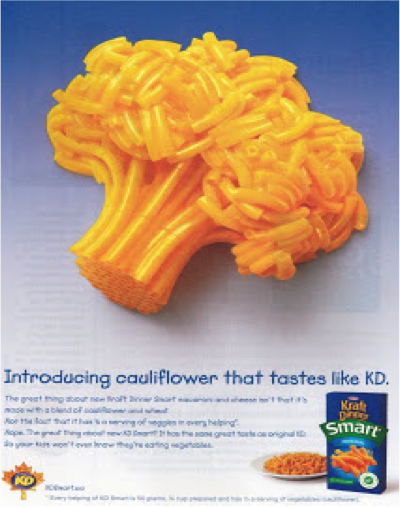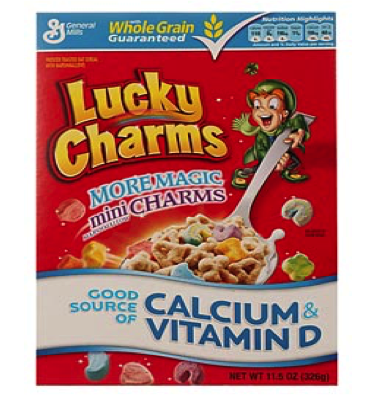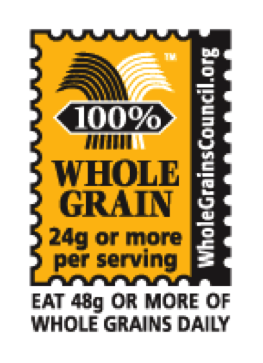 By Vanessa Handley, Department of Health Sciences, Carleton University
By Vanessa Handley, Department of Health Sciences, Carleton University
Kraft Dinner made with real cauliflower? What a great way to indulge without feeling as guilty.
Think again.
Kraft Dinner, among many other companies, is a culprit of using food marketing to create a false sense of health amongst consumers. What the packaging doesn’t tell you is that there is a slim two tablespoons of cauliflower per serving. To make matters worse, there is an additional 12% of saturated fat, 9% more sodium, 12% more sugar and 4% less protein than the original version (Freedhoff, 2010).
Despite significant efforts to address the current obesity epidemic facing our nation, experts have expressed that our food environment may be one of the primary drivers (Pomeranz, 2013). The proliferation of claims on food packaging creates a misleading and illusionary representation of a product’s healthfulness. The lack of regulations restricting questionable claims, and insufficient consequences for those who do violate the regulations, further encourage such deceptive claims and undermine public health. Food and beverage companies consistently manipulate consumers and attempt to gain economic benefit from society’s yearning desire to be healthy and fit, by marketing their products as healthy, when they are in fact not.
 Harris et al. (2009) analyzed a variety of data sources to provide a rigorous and comprehensive analysis of the nutritional quality and marketing of children’s cereals (115 cereal brands examined in total). Of the 115 cereals brands examined, the most health claims were found on the least healthy cereals. Lucky Charms displayed an average of 3.8 health claims, despite being categorized as one of the most unhealthy cereal brands for children.
Harris et al. (2009) analyzed a variety of data sources to provide a rigorous and comprehensive analysis of the nutritional quality and marketing of children’s cereals (115 cereal brands examined in total). Of the 115 cereals brands examined, the most health claims were found on the least healthy cereals. Lucky Charms displayed an average of 3.8 health claims, despite being categorized as one of the most unhealthy cereal brands for children.
Similarly, a study conducted by Mozaffarian et al. (2013) found that food items presenting the “Whole Grain Stamp”, used to indicate products containing at least half a serving of whole grain, actually contained the most sugar of all other grain products assessed and were often more expensive. Upon further exploration, the authors concluded that consumers are often misled by the promised healthfulness that the symbol implies. It should also be noted that Whole Grain Stamp is the only standard that is determined by the manufacturers own assessments and willingness to pay for its use, which poses significant conflict of interest issues.
 “Whether or not a product contains whole grains is just one measure of healthfulness, and others factors must be considered” (Mozzaffarian et al., 2013)
“Whether or not a product contains whole grains is just one measure of healthfulness, and others factors must be considered” (Mozzaffarian et al., 2013)
These studies highlight the deceptive nature of the food marketing industry. However, does our society readily rely on these health claims when attempting to make healthy lifestyle choices in the first place? Or do they see through the claims and refer to the ingredient list or nutrition facts label when making food selections?
Northup (2014) investigated the degree to which consumers relate marketing terms on food packaging, also known as health buzzwords, to healthy lifestyle choices. The author developed an online survey that presented two different images of the same product; one presenting health buzzwords on the packaging (“organic”, “gluten-free”, “whole grain”, etc.) and the other with the health buzzwords photo-shopped out. Participants (a total of 318) were then asked to rate which product they perceived to be the healthier option. The author of this well-controlled, novel and generalizable study found that the participants consistently rated the food products displaying the health buzzwords as healthier choices.
“Words like organic, antioxidant, natural and gluten-free imply some sort of healthy benefit. When people stop to think about it, there’s nothing healthy about Antioxidant Cherry 7-Up – it’s mostly filled with high fructose syrup or sugar. But its name is giving you this clue that there is some sort of health benefit to something that is not healthy at all” (Northup, 2014).
Participants also reviewed the nutrition facts label on a variety of food items. These items were presented two at a time and participants chose which item they perceived to be healthier. Unfortunately, this proved to be a difficult task for many. Rothman et al. (2006) found that poor label comprehension was highly correlated with low-level literacy and numeracy skills. One could argue that poor health literacy increases society’s dependence and reliance on health buzzwords (Butler, 2010).
It is evident that there is a significant need for more restrictive regulations regarding food marketing, in order to protect consumers. Consumers should become aware of the food industry’s intentions and question all health claims on food packaging. Secondly, consumers should refer to the ingredient list and nutrient facts labels in order to assess the actual healthfulness of a food product. It is essential that we become active buyers when striving to make healthy lifestyle choices. With that being said, food label regulators must make changes to the current nutrition facts label, in an effort to increase its comprehensibility for the general public.
Bibliography:
Butler, K. (2010). Making smart choices: Health claims, regulation, and food packaging (Unpublished doctoral dissertation). University of Pittsburg, Pittsburg.
Freedoff, Y. (2010). Badvertising: KD smart think you’re KD stupid. Retrieved from http://www.weightymatters.ca/2010/05/badvertising-kd-smart-thinks-youre-kd.html
Harris, J. L., Schwartz, M. B., Brownell, K. D., Sarda, V., Weinberg, M. E., Speers, S., ….. Byrnes- Enoch, H. (2009). Evaluating the nutrition quality and marketing of children’s cereals. Hartford, CT: Rudd Center for Food Policy and Obesity.
Mozaffarian, R. S., Lee, R. M., Kennedy, M. A., Ludwig, D. S., Mozaffarian, D. & Gortmaker, S. L. (2013). Identifying whole grain foods: A comparison of different approaches for selecting more healthful whole grain products. Public Health Nutrition, 16(12), 2255-2264.
Northup, T. (2014). Truth, Lies, and Packaging: How Food Marketing Creates a False Sense of Health. Food Studies: An Interdisciplinary Journal, 3(1), 9-18.
Pomeranz, J. L. (2013). A comprehensive strategy to overhaul FDA authority for misleading food labels. American Journal of Law & Medicine, 39(4), 617-647.
Rothman, R. L., Housam, R., Weiss, H., Davis, D., Gregory, R., Gebretsadik, T., Shintani, A. & Elasy, T. A. (2006). Patient understanding of food labels: The role of health literacy and numeracy. American Journal of Preventative Medicine, 31(5), 391-398.